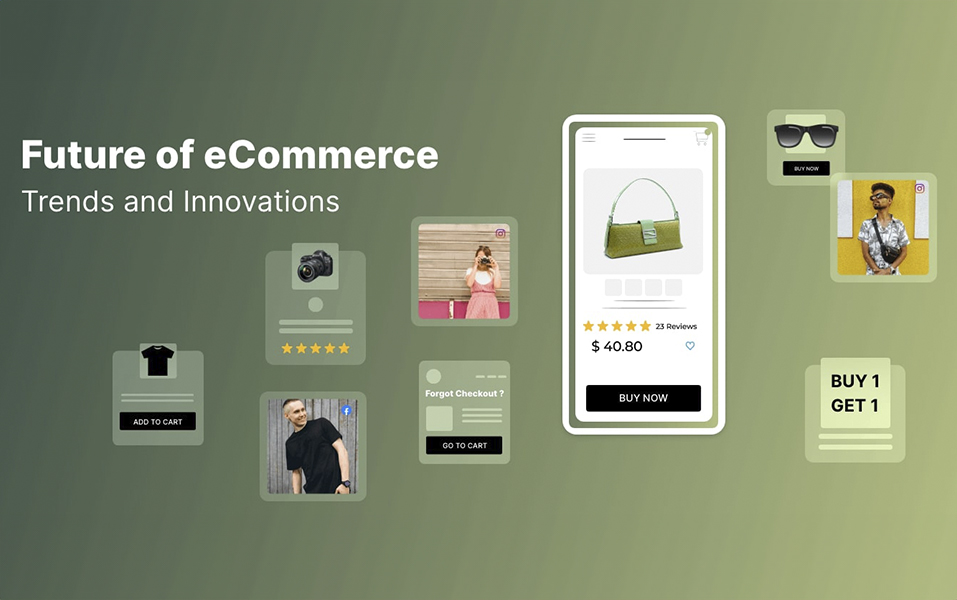

Imagine a world where your favourite fashion pieces are just one click, swipe, or even a voice command away. In this fast-paced digital era, the way we shop for fashion has undergone a radical transformation. The rise of e-commerce has not just changed how we purchase clothes but has revolutionised the entire fashion ecosystem, dictating trends, influencing customer preferences, and even shaping the way designers create collections.
But here’s the twist — understanding these changes isn’t just for retail companies like Amazon or fashion brands like Zara. If you’re a fashion student stepping into the industry, mastering ecommerce isn’t optional; it’s essential. This is where JD Institute of Fashion Technology’s Fashion Business Management course comes into play. It bridges the gap between creativity and commerce, ensuring students don’t just keep up with the industry but lead it.
Augmented reality (AR) for virtual try-ons is one of the most important trends in e-commerce. It lets buyers “try before they buy” from the comfort of their own homes. This technology improves the experience of shopping online by letting people see how an item might look on them. For instance, Gucci’s mobile app has an AR feature that lets customers virtually try on shoes, and Sephora’s application lets customers virtually try on makeup.

Through the introduction of personalised shopping recommendations and customer support solutions, artificial intelligence has revolutionised the online shopping experience. Using artificial intelligence algorithms, companies like H&M and Zara are able to forecast trends, stock the most recent designs, and provide clients with personalised recommendations.

Furthermore, artificial intelligence-powered chatbots have emerged as a crucial component of customer service. These chatbots offer assistance around the clock and can help customers locate the ideal product.
The increasing importance of social media platforms for product discovery and purchase explains the rise in popularity of social commerce. Fashion businesses are now utilising platforms like Instagram, TikTok, and Pinterest to directly sell to consumers. These platforms frequently involve partnerships with influencers in order to expand their reach and establish their credibility.
Louis Vuitton is a famous example of a company that works with fashion influencers to promote new collections. By doing so, the brand is able to reach millions of people through paid postings and engaging content. The Fashion Business Management course at JD Institute teaches students the knowledge of how to use online platforms to boost sales and create influencer marketing efforts that get people to buy things. The students learn how to work with influencers in a way that benefits both sides and helps brands reach younger, more interested audiences.
When it comes to making purchase decisions, consumers are increasingly placing an emphasis on ethical and environmentally responsible business operations. Companies in the fashion industry are responding by implementing environmentally friendly practices into their e-commerce operations.
These activities include utilising recycled materials, reducing wasteful packaging, and emphasising ethical labour standards. Patagonia and Stella McCartney are two companies that have been at the forefront of this trend, incorporating sustainability as a key element into their business models.

Through the use of e-commerce, fashion companies have been able to extend outside their native markets, thereby reaching customers in other countries and increasing their brand awareness on a global basis. Shein and Zara are two examples of fast fashion companies that have successfully mastered this trend by using e-commerce channels to target clients all over the world. It is possible for them to quickly adapt to local markets by utilising online platforms, which allows them to cater to a wide variety of fashion preferences without the need for retail outlets.

E-commerce in the fashion industry is changing quickly, and new trends are coming up to meet the needs of tech-savvy, socially aware, and globally connected customers. These trends are changing how brands work online, from personalised AI to being environmentally friendly. For students who want to have great careers in fashion, keeping up with these trends is very important. Students in the Fashion Business Management course at JD Institute learn all about these e-commerce changes, giving them the skills they need to do well in an industry that is always changing.